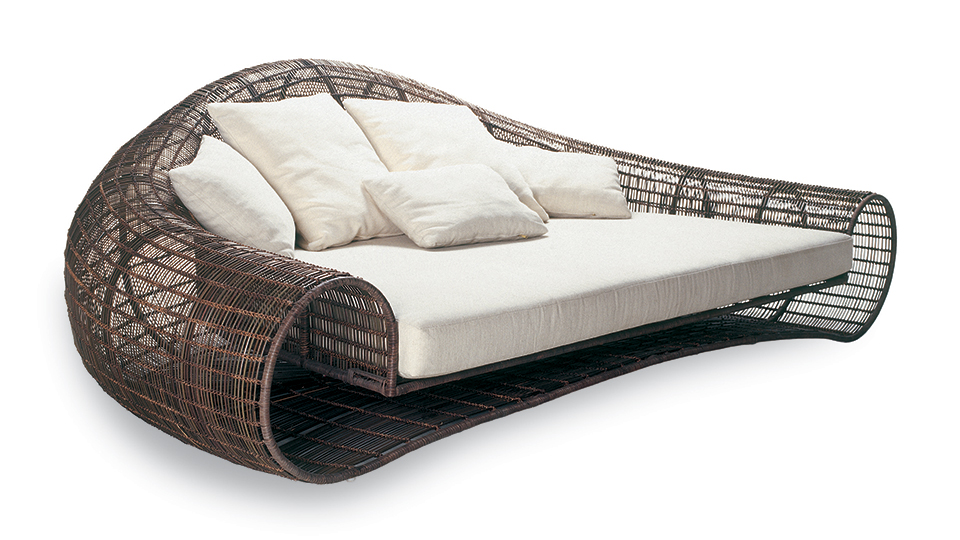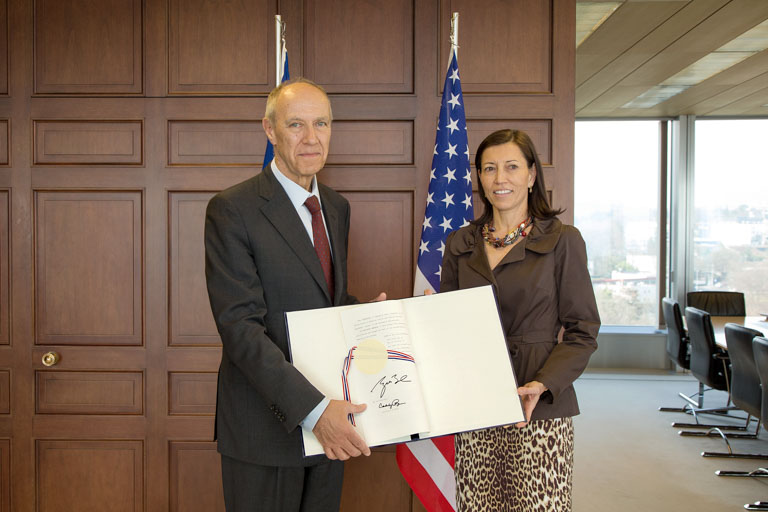
A single distinguishing feature may produce a unique overall impression and justify protection. Mega Zipper (registered Community Design no. 000823414-0002. OHIM).
By Dr. Fridolin Fischer
Following the entry into force of the Geneva Act of the Hague Agreement in the European Community, Dr. Fridolin Fischer, an attorney-at- law in Zurich, Switzerland, and author of “Kleidermode – Phänomen ohne Rechtsschutz?”, an analysis of legal protection for fashion designs, discusses in this article for WIPO Magazine the relevance of design law in the fashion sector.
The European Union trade deficit for clothing in 2006 was a whopping €33.7 billion. From 1994 to 2006, the total production volume for clothing within the 27 countries which now make up the EU decreased by some five percent each year. Still, the EU counts some 1.5 million people working in this sector, generating a value added of €22 billion (about 1.2% of the total value added of EU-27’s industry)1. Over the coming years, European manufacturers will probably be forced to further downsize their production volume in favor of niche products with a high value added.
Some representatives of the European clothing industry are calling for a stronger worldwide intellectual property (IP) protection for fashion designs because they fear major losses from counterfeiting2. Yet some modern economic theories consider competition to include a dynamic interaction between innovation and imitation: innovation generates superior products; imitation makes them available to a greater number of consumers, so a lively imitation process is crucial for dynamic competition. Is this reasonable?
To answer, we must look at the time taken by the imitator to catch up with the innovator. Does the innovator, after launching the innovation, have sufficient time to amortize development costs and generate profit? If the time is too short, then innovators may lose their motivation to generate further innovations, and prolongation through legal measures makes economic sense. However, the fashion industry is a particular case.
Many fashion aficionados cannot afford the original items created by Chanel, Dior, Versace, etc. Instead, they buy cheaper copies, fully aware that these are not originals. The sale of these counterfeit products cannot be equated to loss of sales of the originals as they primarily target consumer groups that are not in the market for the originals. Certainly, plagiarism can confuse consumers and, in case of inferior product quality, damage the designer’s good reputation. Nevertheless, it could be argued that counterfeit products bring fashion labels more publicity, stimulating nascent fashion trends and increasing demand for the originals. Gabrielle “Coco” Chanel was not alone in her assertion that imitation reflects the highest form of flattery3. In this context, what is the relevance of design law to the European fashion industry?
Intellectual property rights for design

Design protection can only be sought when the intangible creative idea – e.g. a novel pattern - is embodied in physical form, such as in a specific fabric or item of clothing. (Snowflake-like pattern: registered Community Design no. 000772058-0003. OHIM)
A creative idea, for example for a certain flowered cloth pattern, is intangible and can be reproduced without any asset erosion. Therefore, exclusive rights to specific physical things, like the flowered cloth pattern, would not suffice to grant the design IP protection. The intellectual idea itself must be protected. This can only be achieved by prohibiting the imitation of the physical things through which we perceive the intellectual good. The ban of imitation for a certain time period “enables people to reap where they have sown. Without that prospect the incentive to sow is diminished.”4
On the other hand, since we can only perceive intellectual goods if they are incorporated in physical things, non-materialized ideas cannot be protected. As a consequence, fashion styles like mini-skirts or jeans in general as much as manufacturing processes, such as innovative techniques to cut, sew or print clothing, which allow the manufacturing of a wide range of different physical results, cannot be protected as such under design law. Protection can only be sought as far as the idea is materialized in a specific physical thing.
From royal privileges to the Community design regulation
The development of European design law goes hand in hand with the history of the textile industry. In the 15th century, the French King granted exclusive rights, or privileges, for the fabrication of textiles. A government ordinance penalized the counterfeiting of weaving patterns for the first time in 1711 in Lyon. In England and Scotland, the first statute concerning the protection for designs was initiated by textile producers in 1787. In 1876, Germany issued a law concerning the copyright on patterns and models, again mainly as a consequence of requests of the textile industry. More recently, the drive to harmonize Europe’s design laws led to the European Regulation on Community designs, which came into force in 2002.5
The European Community Design Regulation protects only designs that are new and have individual character. The degree of visual difference from pre-known designs, resulting from one-to-one comparisons and examined from the perspective of an informed user, is the only decisive criterion as to whether or not a design can be protected. Differences between two designs which are of minor importance to a casual observer, such as the arrangement of buttons, the shape of a collar or the length of a skirt, may produce a different overall impression in the eye of an informed fashion user.6
To register or not to register

Few new designs on the market are truly exceptional in form. Unlike this extraordinary evening gown by Pierre Cardin, 1988.
Fashion designers are actually quite limited in their scope for creativity: clothing must fit the human body; and the general social need to conform to accepted dress codes tends to lead to uniformity. Thus few new designs on the market are truly exceptional in form. But since difference is assessed by one-to-one comparisons, a single distinguishing feature - such as an embroidered jeans pocket, an oversized zipper or a dominant print - may be enough to produce a unique overall impression and justify the protection either of the extraordinary feature or of the whole item.
In 2007, WIPO registered only 29 international designs (2.5% of total registrations) under class 2 of the Locarno Classification (clothing and haberdashery) through The Hague System, while the EU Office for Harmonisation in the Internal Market (OHIM) registered 7’421 (9% of total). Yet, most of the designs registered by fashion houses are not for clothing, but for accessories – watches, bags, sunglasses, etc., which fall under several different Locarno classes – an important source of income for fashion labels. The majority of fashion designers consider that, with fashion seasons lasting only a few months, the five-year minimum protection period offered by these registration systems is not appropriate for often ephemeral fashion designs, and that their time and money would therefore be better spent on creating new designs than on registration.
European designers do have an effective solution in the unregistered Community design. This is obtained without any formalities simply by making the design available to the public, and lasts for three years. Since most designers become concerned with protection only after becoming a victim of counterfeiting, the unregistered Community design provides a welcome alternative to registration.
Design vs trademark protection
In conclusion, design registration tends to be appropriate primarily for protecting exceptional designs or features, or those which might be expected to become long lasting icons. However, if a design is counterfeited, the endless numbers of designs on the market make it hard to detect violations. Instead of design protection, most fashion designers rely much more on their fashion labels, applied directly on their products and often protected under trademark law. Fashion labels make it easier for designers to detect imitations and help fashion users to identify preferred items. Fashion houses invest large amounts in advertisements to promote the attributes of their trademarks in order to attract fashion users. But it is no surprise that counterfeiters also try to free-ride on the sales-promotional effects of trademarks by copying both the designs and the corresponding labels. For this reason, major fashion designers incorporate special treated yarn or other security elements into their labels, so facilitating the distinction between originals and imitations.
_____________________________



